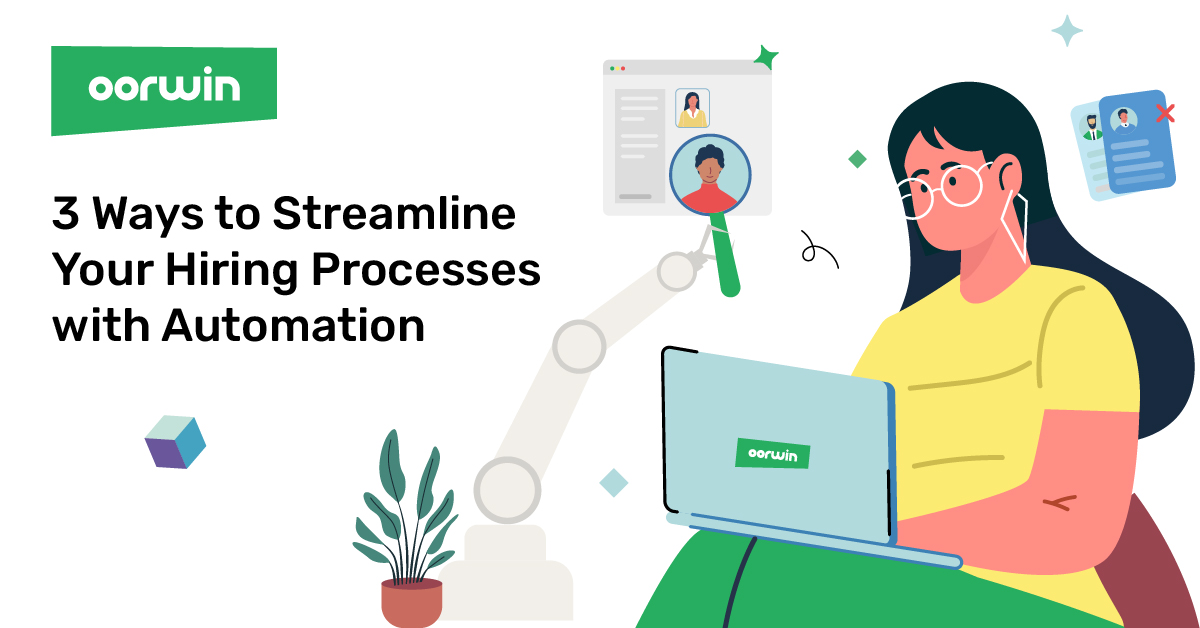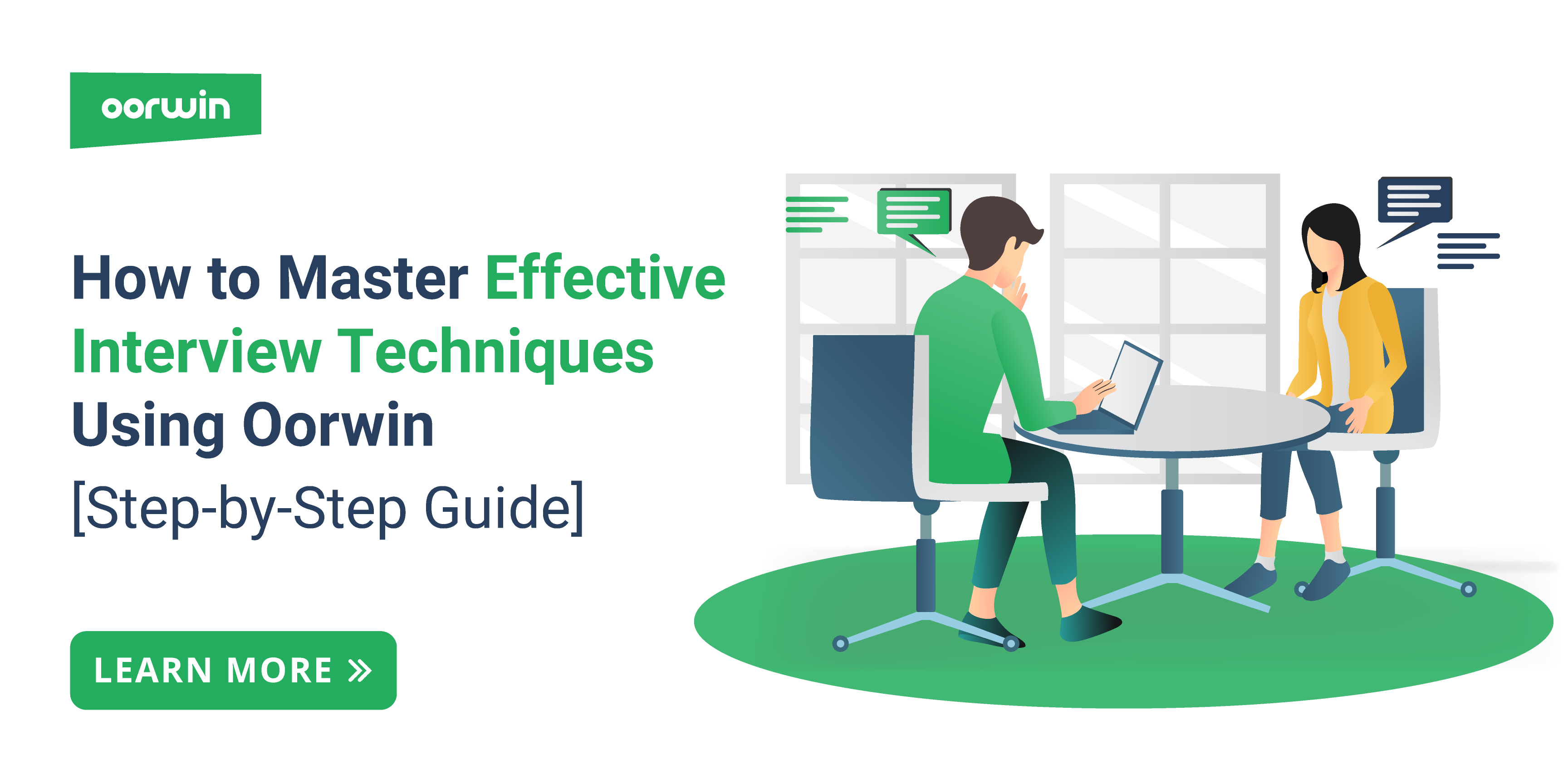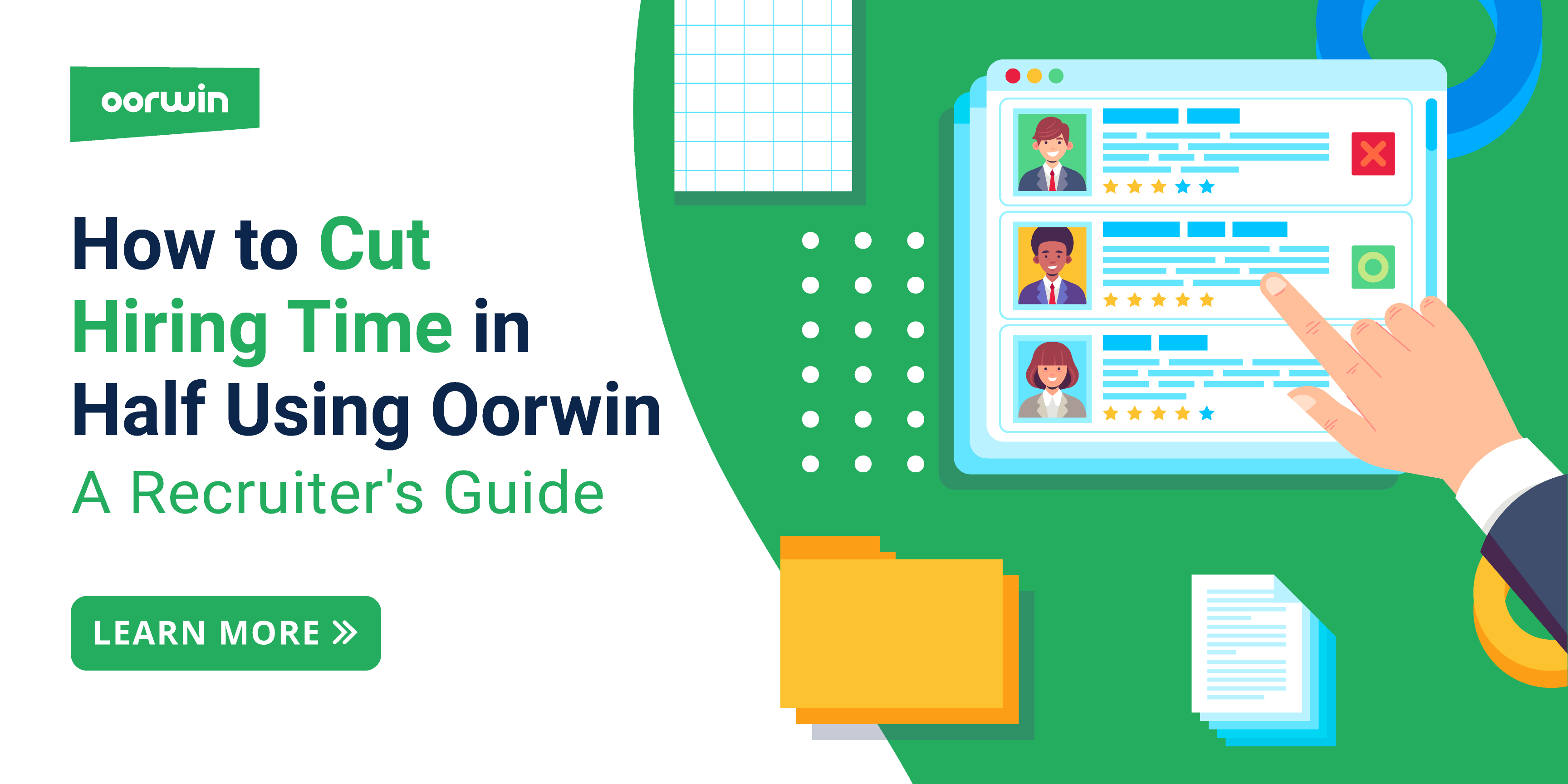Scale Your Recruitment Using Automated Hiring System
Oorwin
10min read / 16 Jun 2022

Related Articles
Automated Hiring System: 3 Strategies to Streamline Recruitment
An automated hiring system is now a must-have in the modern corporate world. Hiring strategies have undergone a massive transformation with the advent of innovative technologies, specifically automated recruiting tools found in applicant tracking systems (ATS) and customer relationship management (CRM) platforms. These tools are revolutionizing recruitment, making it faster and more efficient. With the ability to automate tedious and time-consuming tasks, ATS and CRM systems are streamlining the recruitment process, enabling organizations to keep up with the rapidly evolving job market. By seamlessly blending technology with recruitment strategies, organizations can make their hiring processes more efficient and precise. In this guide, we explore three impactful strategies that leverage the power of an automated hiring system to streamline recruitment, ensuring you find the right talent swiftly and effectively.
Streamlining Hiring: The Rise of Automated Recruitment
Embracing automated recruitment is a step towards modernizing the hiring process. Automated recruitment tools can help HR professionals manage large volumes of applications, ensuring that no potential candidate is overlooked. From posting job openings to multiple platforms simultaneously to utilizing AI for initial screenings, automated recruitment ensures a seamless and efficient hiring process.
Benefits of Automated Recruitment Strategies
Automated recruitment strategies offer several benefits to organizations:
- Efficiency: Automation speeds up the recruitment process by handling repetitive tasks quickly.
- Cost Savings: Reduced manual effort can significantly save time and resources.
- Accuracy: Automated systems minimize human errors, ensuring a more accurate candidate selection.
- Consistency: Automation ensures that every application is processed similarly, promoting fairness.
- Data-Driven Decisions: Automated tools provide valuable data and insights that can inform and improve recruitment strategies.
- Enhanced Candidate Experience: Quick responses and streamlined processes can lead to a positive experience for applicants.
- Scalability: Automated recruitment strategies can easily adapt to changes in hiring volume.
3 Strategies to Scale Your Recruitment Process with Automated Hiring System
Hiring automation transforms how businesses and recruiters find, attract, and hire talent. By streamlining the various aspects of the hiring workflow, hiring automation can greatly enhance human capabilities and save considerable time along the way. Automation expedites hiring time and quickly matches the most qualified candidates with available roles.
Ready to learn more? Here are three important hiring processes that benefit the most from automation:
The recruitment process is broken down into three key steps: resume screening, conducting the pre-qualification process, and interviewing. Each step requires a different level of automation and tools to help you achieve your goals.
Applicant Resume Screening
Manual screening of applications is the most time-consuming step in the hiring process. Especially since around 88% of the applications received for a job are irrelevant. This leads to recruiters or hiring managers spending almost 23 hours, on average, screening applications for a single role. But AI-powered smart screening tools, like digital resume screening, can automate the entire screening process.
Developed to successfully integrate with Applicant Tracking System (ATS), this software learns the job requirements and what qualified or eligible candidates look like based on previous hiring actions and decisions. Using the employee data on tenure and performance, the automation software analyzes which candidates will be the most successful employees. Smart screening software uses keyword parsing and predictive analysis to learn about the employees’ experience, skills, and qualifications to screen, rank, and select new candidates automatically.
Candidate Pre-Qualification Processes
Filtering through hundreds of resumes and job applications is a challenging task. This is where automation becomes incredibly handy in simplifying your hiring process. Automating pre-qualification processes saves hiring managers valuable time and energy by sifting through application questions and expediting candidate shortlists.
Similarly, automated communication tools, like chatbots, enable hiring managers to provide pre-qualifying questions, next-step suggestions, and valuable feedback at an incredibly expedited rate. These tools help managers work more effectively during the pre-qualification stage of the hiring process. Streamlined pre-qualification communication also considerably improves the candidate experience, which increases the chance that the candidate will accept the offer.
Interview analysis
Hiring automation tools help managers conduct interviews anytime, anywhere. Digitized interview tools record interviews and evaluate factors like words used, facial expressions, gestures, and speech patterns to determine how well an applicant may fit a specific role. Automation also improves hiring by offering data points on how well the potential candidate fits the company culture. This inevitably increases the likelihood that the right candidate will be selected.
How to Automate Recruitment Process following these Steps
The recruitment process is long and tedious, but automating some of the tasks can be made much easier. The first step is to create an ATS that will help you manage your candidates from start to finish.
How to Automate the Creation of Job Adverts
Job adverts are a great way to attract talent to your organization. However, to ensure you get all top-tier candidates, you must create job adverts that speak directly to them.
In other words, one needs to create ads with an eye for detail and use language that resonates with your target audience. It also means ensuring that the job description is clear and concise so that candidates know exactly what they will be expected to do when joining your team.
How to Automate Job Adverts Posting
Once you create a job advert, post it to the proper channels. You can automate posting job openings to online boards from your company’s recruitment database using an ATS.
Recruiters can save themselves a great deal of time by inputting a single job description and then having it automatically populate all the boards they typically use.
Automated Shortlisting and Rejection
The recruitment process is a complex one. It’s essential to have a system that can handle the many variables of the hiring process, such as automated shortlisting and rejection. It will ensure that your team has access to all the relevant information at their fingertips when deciding about candidates.
Automated Interview Process
- Candidate-led Interview Scheduling
The next step of the recruitment process is candidate-led interview scheduling. This means that candidates can schedule interviews with your team at a time that suits them and their schedules rather than waiting for an email from your recruiter or hiring manager.
- Video Interviewing
The next step of the recruitment process is video interviewing. Video interviewing is a great way to get a feel for candidates’ personalities to determine whether they would be a good fit for your company culture. This step also helps eliminate any bias in decision-making by removing visual cues such as age and race from the equation.
Automate Key Onboarding Steps
When you have a new employee, getting them up to speed as quickly as possible is important. This means communicating a clear onboarding process to the new hire and their manager. It should include steps such as what type of work they will be doing on day one, who they should report to when they start, and what resources they need access to while learning their job.
A quick win is to automate the onboarding process to become one seamless whole. This improves both qualities of hire and retention rates—a recruiter might not naturally think about this, but better onboarding equals a higher ROI!
Transform Your Recruitment Journey with Oorwin’s Automation Solutions
As the demand for automated recruitment processes grows, the role of hiring managers is set to evolve. Automated hiring systems and technology empower hiring managers to adopt a more strategic approach to workplace planning, reducing the time it takes to close job positions and improving the quality of hires.
Automated hiring systems provide a competitive advantage to hiring managers, addressing some of the most significant challenges in the industry. It’s essential for hiring managers to familiarize themselves with these cutting-edge systems.
Contact us today to learn how Oorwin’s automated hiring system can transform your recruitment strategy and bring unparalleled benefits to your team.
Frequently Asked Questions
What is an automated recruitment process?
An automated recruitment process refers to using technology, such as an applicant tracking system (ATS), to streamline and automate various tasks involved in the hiring process. This includes tasks like posting job listings, screening and filtering applications, scheduling interviews, and sending follow-up emails.
How does the automated hiring process work?
The automated hiring process integrates an applicant tracking system (ATS) into the recruitment process. The ATS automates various tasks, such as posting job listings, screening and filtering applications, scheduling interviews, and sending follow-up emails. Recruiters can then focus on other important aspects of the recruitment process, such as conducting interviews and making hiring decisions.
What are the benefits of an automated recruitment process?
An automated recruitment process can improve the efficiency and productivity of the hiring process in several ways. It can help save time by automating repetitive tasks, reducing errors and ensuring consistency in the recruitment process, providing real-time analytics and reports, and increasing the chances of hiring top talent.
Can an automated recruitment process eliminate the need for recruiters?
No, an automated recruitment process does not eliminate the need for recruiters. While it can automate various tasks, recruiters must make important decisions, such as conducting interviews and hiring. An automated recruitment process aims to help recruiters be more productive and efficient, not replace them.
Popular Articles..
Blog

7min read / 25-Jun-2025
Master Effective Interview Techniques with Oorwin: A Step-by-Step Recruiter’s Guide
Blog
Blog
Get the latest Oorwin releases, updates, success stories & industry news
 Back
Back
